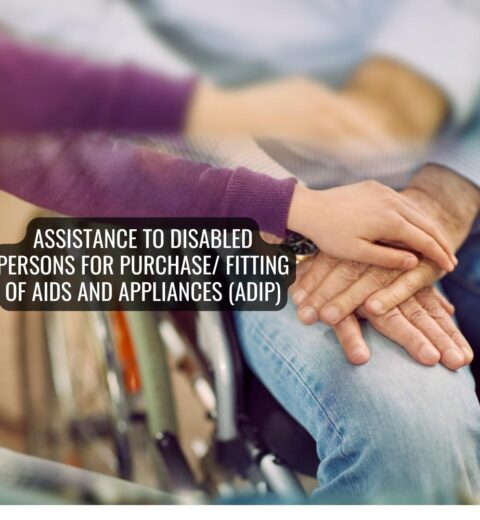Introduction:
The Implementation of Persons with Disabilities Act (SIPDA) stands as a pivotal milestone in the journey towards creating an inclusive and empowering environment for individuals facing physical challenges. Enacted with the vision of implementing the rights of persons with disabilities, SIPDA is a comprehensive government scheme for divyang individuals, embodying the commitment to fostering an equitable society. This blog delves into the multifaceted aspects of SIPDA, examining its historical evolution, key components, application processes, and the transformative impact it has on the lives of disabled individuals. By exploring the nuances of this critical legislation, we aim to shed light on how SIPDA serves as a beacon for implementing the rights of persons with disabilities and fostering a more accessible and inclusive society. In a visionary stride towards fostering inclusivity and championing the rights of individuals facing physical challenges, the Implementation of Persons with Disabilities Act (SIPDA) emerges as a pioneering government scheme for divyang individuals. Dedicated to implementing the rights of persons with disabilities, SIPDA signifies the government’s unwavering commitment to creating an equitable society. This blog embarks on an insightful exploration of SIPDA, navigating its historical evolution, dissecting key components, demystifying application processes, and unraveling the transformative impact it holds for disabled individuals. With a focus on the act’s role as a pivotal government scheme for disabled persons, this comprehensive examination aims to shed light on how SIPDA acts as a beacon for societal inclusivity, navigating the complex landscape of legislation designed to empower and protect the rights of those with diverse abilities.
Historical Evolution:
The historical evolution of the Implementation of Persons with Disabilities Act (SIPDA) traces a transformative journey within the landscape of disability rights in India. Enacted with the vision of implementing the rights of persons with disabilities, SIPDA represents a significant paradigm shift in the government’s approach towards creating an inclusive society. Over the years, this government scheme for divyang individuals has evolved to address the multifaceted challenges faced by those with diverse abilities. The act’s inception and subsequent amendments reflect a progressive response to societal needs, underscoring the commitment to ensuring equal opportunities for disabled persons. Understanding the historical context of SIPDA is essential to appreciating the comprehensive framework it has become, fostering an environment where government schemes for disabled persons actively contribute to dismantling barriers and promoting inclusivity. The roots of SIPDA lie in the historical commitment of the government to address the unique challenges faced by persons with disabilities. The act’s evolution reflects a progressive shift in policy-making, with a focus on implementing the rights of persons with disabilities. Over the years, SIPDA has evolved to become a comprehensive framework that addresses diverse needs, ensuring that individuals with disabilities have equal opportunities in various spheres of life. Understanding the historical context is crucial to appreciating the government’s steadfast dedication to implementing the rights of persons with disabilities and creating a society that embraces diversity.
Key Components of SIPDA:
The Implementation of Persons with Disabilities Act (SIPDA) is characterized by a robust set of key components meticulously crafted to ensure the effective implementation of the rights of persons with disabilities. At its core, SIPDA serves as a vital government scheme for divyang individuals, focusing on creating an inclusive society. The key components of SIPDA encompass a comprehensive framework addressing accessibility, employment, education, and healthcare for disabled persons. Provisions within the act are designed to eliminate barriers and offer affirmative actions, fostering an environment where individuals with diverse abilities not only integrate seamlessly into society but are also empowered to thrive. SIPDA’s commitment to inclusivity is evident in its multifaceted approach, making it a cornerstone in the government’s ongoing efforts to protect and promote the rights of disabled persons. Central to SIPDA are its key components designed to empower and protect the rights of persons with disabilities. This section of the blog explores the comprehensive nature of SIPDA, including provisions for accessibility, employment opportunities, education, and healthcare. The act encompasses a range of affirmative actions, ensuring that individuals with disabilities are not only integrated into society but also provided with the necessary support to thrive in diverse environments. By understanding these key components, it becomes evident how SIPDA serves as a transformative force in implementing the rights of persons with disabilities.
Application Processes and Accessibility:
Navigating the application processes under the Implementation of Persons with Disabilities Act (SIPDA) is pivotal for individuals seeking to access the benefits of this government scheme for divyang individuals. SIPDA places a significant emphasis on ensuring accessibility, both in the application procedures and in the broader context of physical spaces and information dissemination. The act streamlines application processes to make them more inclusive and user-friendly, aiming to remove barriers that may impede disabled persons from availing themselves of the provisions outlined. Comprehensive guidelines, transparent documentation requirements, and a commitment to accessibility underscore SIPDA’s intent to empower individuals with diverse abilities, fostering a sense of dignity and independence in navigating the application and subsequent engagement with the various facets of the act. This section provides an in-depth guide to the application procedures, required documentation, and the steps individuals need to take to access the provisions outlined in SIPDA. Additionally, emphasis is placed on the act’s commitment to ensuring accessibility, both in physical spaces and in the dissemination of information. The government’s intent is to make the implementation of the Persons with Disabilities Act as seamless as possible, allowing disabled individuals to navigate life with dignity and independence.
Impact on the Lives of Disabled Individuals:
The Implementation of Persons with Disabilities Act (SIPDA) stands as a transformative force with a profound impact on the lives of disabled individuals, encapsulating the essence of the government scheme for divyang persons. SIPDA’s comprehensive approach, aimed at implementing the rights of persons with disabilities, has manifested tangible improvements in the quality of life for countless individuals. Through provisions addressing accessibility, employment, education, and healthcare, SIPDA has become a catalyst for societal integration and empowerment. The act goes beyond legal measures, fostering a sense of inclusion, self-reliance, and active participation in various spheres. SIPDA’s impact is evident in stories of resilience, as disabled individuals find opportunities for education, employment, and engagement in society, emphasizing its role in creating a more equitable and accessible future for those with diverse abilities. Examining the real-life impact of SIPDA on the lives of disabled individuals reveals stories of resilience, empowerment, and societal integration. Through testimonials and case studies, this section illustrates how the act has transformed the lives of countless individuals, providing them with opportunities for education, employment, and active participation in society. SIPDA’s impact extends beyond legal provisions; it resonates in the tangible improvements in the quality of life for disabled persons, emphasizing the act’s significance in implementing the rights of persons with disabilities.
Challenges and Solutions:
While the Implementation of Persons with Disabilities Act (SIPDA) represents a significant stride towards inclusivity, challenges persist in effectively implementing the rights of persons with disabilities within the framework of this government scheme for divyang individuals. These challenges encompass factors such as limited awareness about the provisions of SIPDA, bureaucratic complexities in its execution, and regional disparities in accessibility. Addressing these concerns requires concerted efforts, including extensive awareness campaigns to inform individuals about their rights and the available support under SIPDA. Streamlining administrative processes, enhancing collaboration between governmental bodies and advocacy groups, and ensuring uniform accessibility across regions are crucial steps in overcoming these challenges. By actively addressing these issues, SIPDA can optimize its impact, ensuring that it serves as an effective tool for implementing the rights of persons with disabilities and fostering a more inclusive society. This section addresses potential hurdles, ranging from awareness gaps to administrative complexities, and offers strategic solutions to enhance the act’s impact. Collaborative efforts between government bodies, non-governmental organizations, and advocacy groups are crucial in overcoming challenges and ensuring that SIPDA achieves its intended objectives of implementing the rights of persons with disabilities.
Conclusion:
In conclusion, the Implementation of Persons with Disabilities Act (SIPDA) emerges not only as a legal framework but as a transformative force, embodying the government’s commitment to implementing the rights of persons with disabilities and fostering an inclusive society. Serving as a crucial government scheme for divyang individuals, SIPDA’s impact reverberates through its key components addressing accessibility, employment, education, and healthcare. While challenges exist, the act’s multifaceted approach, dedication to inclusivity, and emphasis on removing barriers contribute significantly to the lives of disabled persons. SIPDA has become a beacon for empowerment, offering a roadmap towards a more equitable future where individuals with diverse abilities can navigate the complexities of life with dignity and independence. As the government continues to refine and strengthen this initiative, SIPDA stands as a testament to the transformative power of legislation in championing the rights and wellbeing of persons with disabilities. The Implementation of Persons with Disabilities Act (SIPDA) stands as a cornerstone in the government’s commitment to inclusivity and empowerment. By implementing the rights of persons with disabilities, SIPDA has become a catalyst for societal transformation, fostering an environment where diversity is embraced, and individuals facing physical challenges can lead fulfilling lives. This blog underscores the significance of SIPDA in the broader context of creating a more accessible and inclusive society, highlighting its role as a beacon of hope and progress in the journey towards a truly equitable future.




